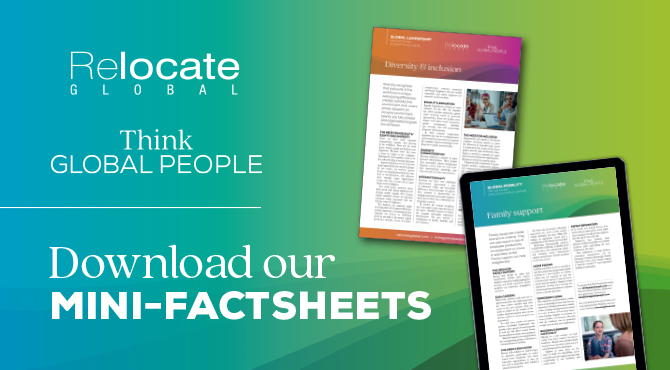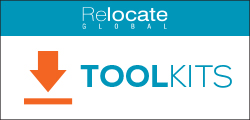Qualifications and education in Northern Ireland
The education system in Northern Ireland differs from other systems that are available in the UK, but is most similar to the Welsh system. We find out what you can expect from the school system there.

Now available as an ebook on Amazon! Simply download from Amazon onto your Kindle, mobile phone or tablet to read wherever you are!
Northern Ireland’s education system differs from the education systems of other countries in the UK, but is most similar to the Welsh system. We take a look.The Department of Education (DE) is responsible for Northern Ireland’s education policy, with the exception of higher and further education, which are governed by the Department for the Economy (DfE).
School starting age in Northern Ireland
Children who have turned four by 1 July begin school in the following September; this is one of the lowest compulsory school starting ages in Europe. The school year runs from 1 September until 1 July. The Foundation Stage includes Years 1 and 2, Key Stage 1 includes Years 3 and 4, Key Stage 2 includes Years 5–7, Key Stage 3 includes Years 8–10, and Key Stage 4 is for children in Years 11 and 12.The Foundation Stage encourages good early years practice and provides teachers with the flexibility to follow children’s interests and teach positive attitudes to school and learning.Children in Key Stages 1 and 2 are provided with the opportunity to explore and develop their interests and study language and literacy, mathematics and numeracy, the arts, the world around us, personal development, and physical education.
The Foundation Stage includes Years 1 and 2, Key Stage 1 includes Years 3 and 4, Key Stage 2 includes Years 5–7, Key Stage 3 includes Years 8–10, and Key Stage 4 is for children in Years 11 and 12.The Foundation Stage encourages good early years practice and provides teachers with the flexibility to follow children’s interests and teach positive attitudes to school and learning.Children in Key Stages 1 and 2 are provided with the opportunity to explore and develop their interests and study language and literacy, mathematics and numeracy, the arts, the world around us, personal development, and physical education.Related news:
There are nine areas of learning in Key Stage 3: language and literacy; mathematics and numeracy; modern languages; the arts; environment and society; science and technology; learning for life and work; physical education; and religious education. The curriculum must make some provision for all nine areas.The Key Stage 4 curriculum follows the same areas of learning but must also adhere to the Key Stage 4 Entitlement Framework, which is designed to ensure that pupils have access to a broad, balanced and relevant curriculum.
How are students assessed in Northern Ireland?
Children are assessed every year through teacher assessments, and formal results are reported to parents at the end of Years 4 and 7.Northern Irish schools are inspected by the Education and Training Inspectorate (ETI) and rated outstanding, very good, good, satisfactory, inadequate or unsatisfactory. Schools that are underperforming are inspected more regularly than those that are performing well.The Council for the Curriculum, Examinations and Assessment (CCEA) is the regulator of qualifications in Northern Ireland and advises the government on what should be taught in schools and colleges. It monitors the standards of all qualifications and also offers its own qualifications, such as GCSEs, AS and A Levels, Entry Level Qualifications and Online Language Assessment. In 2014, the CCEA was the awarding body for around 75 per cent of A Levels in Northern Ireland.As in Wales, the AS will remain part of the A Level, so the AS will contribute to the final A Level grade. However, the weighting of the AS will change, with revised AS qualifications contributing 40 per cent towards the final A Level grade.Revised GCSEs will be taught from September 2017, and the changes will largely reflect the content of the syllabus.Types of school in Northern Ireland
All children between the ages of four and 16 are entitled to a free school place. The majority of schools are grant-aided, although there are around ten independent schools in Northern Ireland.Controlled schools are managed and funded by the Education Authority (EA) through boards of school governors. Although they are now open to all faiths, many were originally Protestant church schools, and the Protestant church still maintains a link with the schools through representatives on the boards of governors.Voluntary maintained schools are managed by boards of governors nominated by trustees (mainly Roman Catholic), along with parents, teachers and EA representatives.Voluntary non-maintained schools are mainly grammar schools managed by boards of governors. There are still around 70 grammar schools in Northern Ireland, but the system works differently from the English system. Rather than using a state-run entrance test such as the 11-plus, Northern Ireland’s grammar schools set their own entrance exams.Northern Ireland has a large number of Roman Catholic schools. The Council for Catholic Maintained Schools (CCMS) supports Catholic schools through boards of governors and is the largest employer of teachers in Northern Ireland.Integrated schools encourage Protestant and Roman Catholic pupils to come together to improve their understanding of one another and their cultures and values.Irish-medium education is also provided in Irish-speaking schools. Comhairle na Gaelscolaíochta was established by the DE to encourage it.Further education
Higher education in Northern Ireland relates to levels 4–8 of the Framework for Higher Education Qualifications (FHEQ). This applies to degrees, diplomas and other certificates and awards granted by university or colleges.There are three universities, two university colleges, six further-education colleges and an agricultural college in Northern Ireland. Many of these rank highly at the international level, and the country is a popular destination for international students.As with Scotland, Wales and England, UCAS is the admissions body through which pupils apply for places at university or college.This article was refreshed on 25 July 2019.The Guide to Education & Schools in the UK is designed to help relocating parents make informed education choices.
- Employers: Access the free digital guide here, request a free print copy here.
- Relocation professionals: Access the free digital guide here.
- Parents: Access the free digital guide here or purchase a print copy here
Access hundreds of global services and suppliers in our Online Directory
 Get access to our free Global Mobility Toolkit
Get access to our free Global Mobility Toolkit  © 2019. This article appeared in the 2017 edition of the Guide to Education & Schools in the UK, published by Profile Locations, Spray Hill, Hastings Road, Lamberhurst, Kent TN3 8JB. All rights reserved. This publication (or any part thereof) may not be reproduced in any form without the prior written permission of Profile Locations. Profile Locations accepts no liability for the accuracy of the contents or any opinions expressed herein.
© 2019. This article appeared in the 2017 edition of the Guide to Education & Schools in the UK, published by Profile Locations, Spray Hill, Hastings Road, Lamberhurst, Kent TN3 8JB. All rights reserved. This publication (or any part thereof) may not be reproduced in any form without the prior written permission of Profile Locations. Profile Locations accepts no liability for the accuracy of the contents or any opinions expressed herein.
































